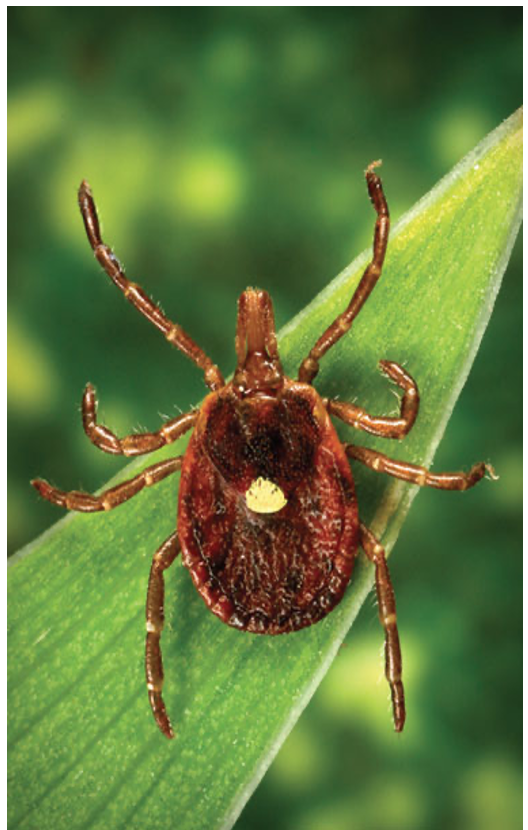Staffan Lindgren | 10 May 2021
As an entomologist I find all arthropods fascinating. There is one group, however, that I can’t quite come to terms with – the ticks. Recently, reports on Facebook have started to trickle in showing that ticks are active and waiting for some warm body to grab onto.

https://www.childrenshospital.org/conditions-and-treatments/conditions/l/lyme-disease
Ticks are arachnids, i.e., they are related to spiders, scorpions, harvestmen, mites and a host of other weird and wonderful groups. They are specialized as temporary ectoparasites, attaching to other organisms to access sustenance in the form of blood. For that purpose, they have developed mouthparts that they bury into a host’s skin. They also have an expandable abdomen, allowing them to imbibe up to 10 times their own weight in blood. Like other arthropods, ticks grow by moulting through a number of stages, starting with an egg. Soft ticks (Family Argasidae) develop through a larva followed by up to seven nymphal instars before they become adults after the final moult. Hard ticks (Family Ixodidae) develop through four stages, egg, larva, nymph, and adult. Depending on species, they may use one, two or three hosts. Hosts are found through a behaviour called “questing”, whereby the tick ascends vegetation and extends its forelegs. When an animal walks by, the tick will grab onto it, and then find a suitable spot to feed, usually hidden among hairs. On humans, common places are the groin, armpits, neck at the hairline, or anywhere clothing restricts further progress. Ticks feed by burying their mouthparts in the skin of the host. Since they have a barbed hypostome (literally below mouth), they become tightly attached. Like mosquitoes, they inject saliva which includes an anti-coagulant, numerous proteins, and sometimes bacteria and other disease agents.

https://www.bayarealyme.org/lyme-disease-prevention/protect-yourself-your-family/
An unfortunate (for us) fact is that ticks are vectors of a large number of more or less serious diseases, e.g., Rocky Mountain spotted fever, tick paralysis, and Lyme disease. An interesting affliction sometimes resulting from a bite by the Lone Star tick, Amblyomma americanum, resulting in an allergy to red meat (https://pubmed.ncbi.nlm.nih.gov/29074067/)!

https://www.avma.org/javma-news/2020-11-15/beware-questing-tick
Because of these diseases, it is important to check for ticks after being in brushy areas, particularly if those areas are home to deer and small mammals. Ticks, and particular their immature stages, are very small, and therefore difficult to detect before enlarged by feeding. Attachment takes from minutes to hours, depending on species. Once mouthparts are buried, it is difficult to dislodge the tick. If the mouthparts break off, it can result in secondary infection, so proper procedure is important. All tick species are not equally vector competent (https://parasitesandvectors.biomedcentral.com/articles/10.1186/s13071-020-3893-x), however, so determining the species and whether or not it is carrying a disease agent may be important. All individual ticks are not carrying disease agents, The BC Center for Disease Control has a good information page to help guide you as to what to do should you have the misfortune to get a tick (https://www.healthlinkbc.ca/healthlinkbc-files/tick-bites-disease).
There are also additional resources to consult. For an exhaustive treatise, you can download for free “A Handbook to the Ticks of Canada” at https://biologicalsurvey.ca/monographs/read/18. There is also an excellent online resource called eTick https://www.etick.ca/, including a mobile app.
